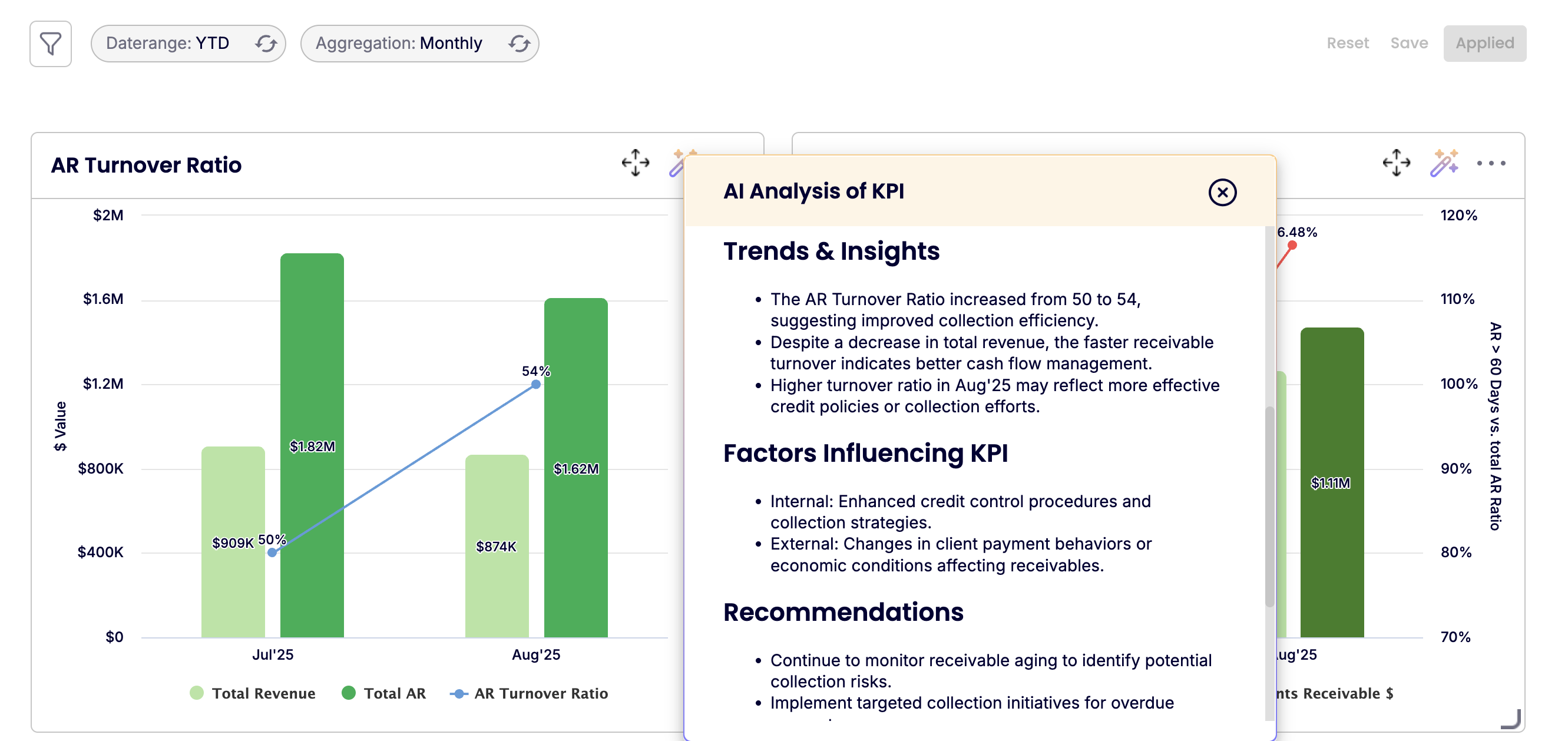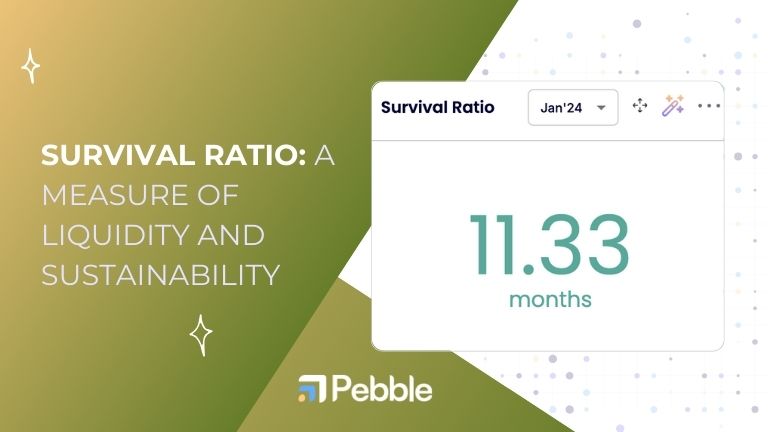For nonprofits, sustainability isn’t just about raising funds—it’s about ensuring those funds are available when needed. One of the most important indicators of financial stability is the Accounts Receivable (AR) Turnover Ratio.
This metric shows how quickly an organization collects money owed, directly impacting liquidity, program delivery, and funder confidence.
Key Metric Details
- Formula:
AR Turnover Ratio = Total Revenue ÷ Average Accounts Receivable - What It Reflects:
The speed at which receivables are collected. Higher values indicate more efficient cash conversion and healthier cash flow. - Why It Matters:
- Enhances liquidity
- Reduces risk of bad debts
- Ensures funds are available to support programmatic efforts
- Factors Influencing the KPI:Internal Factors
- Adoption of tighter credit control and collection procedures
- Timely invoicing and follow-up
- Improved donor/grant reporting and communication
- Donor or client payment behaviors
- Broader economic conditions affecting fund disbursement timing
What to Watch For
When monitoring AR Turnover, nonprofit leaders should pay attention to:
- Trends over time: Is your ratio improving or declining month to month?
- Alignment with cash needs: Does the timing of collections support payroll and program expenses?
- Impact of external factors: Are donor behaviors or economic conditions slowing payments?
- Receivable aging: Are specific accounts consistently overdue?
Action Steps to Improve AR Turnover
To strengthen this KPI, executive and finance teams can:
- Tighten credit and collection policies: Define clear payment terms and follow up promptly.
- Monitor receivables by funder type: Segment government contracts, foundations, and individual donors to spot patterns.
- Automate reminders and reporting: Use dashboards to flag overdue accounts early.
- Leverage banking and payment tools: Explore ACH or direct debit options to accelerate inflows.
- Align finance and program teams: Ensure both are aware of receivable timelines that affect program execution.
Why It Matters for Nonprofit Leaders
For Executive Directors and Program Directors, AR Turnover is more than a finance ratio—it’s a mission enabler. Strong turnover ensures you have cash on hand to deliver services, pay staff, and meet grant obligations without disruption.
Platforms like Pebble Impact make this easier by:
- Providing real-time dashboards that track receivables alongside other KPIs
- Enabling board- and funder-ready reports with one click through the Reporting Studio
- Surfacing early warnings with AI-powered insights so leaders can act before liquidity issues become crises
Track this KPI with Pebble in real-time with AI-powered analysis:
Pebble not only tracks this metric in real time basis but also analyze real-time to provide actionable insights just in a click!

Key Takeaways
- AR Turnover shows how efficiently your nonprofit collects funds owed.
- Higher ratios signal healthier cash flow and stronger funder confidence.
- Leaders should watch for trends, align collections with expenses, and act quickly on overdue receivables.
- Using integrated tools like Pebble ensures monitoring is proactive, not reactive.
Explore More Nonprofit KPIs
- Financial Metric: Liquid Fund Indicator
- Financial Metric: Survival Ratio
- Performance by Program: Insights Into Impact & Efficiency
Ready to connect financial insights with mission results?
Schedule a walkthrough to see how Pebble helps nonprofits track KPIs, automate reporting, and strengthen decision-making.




